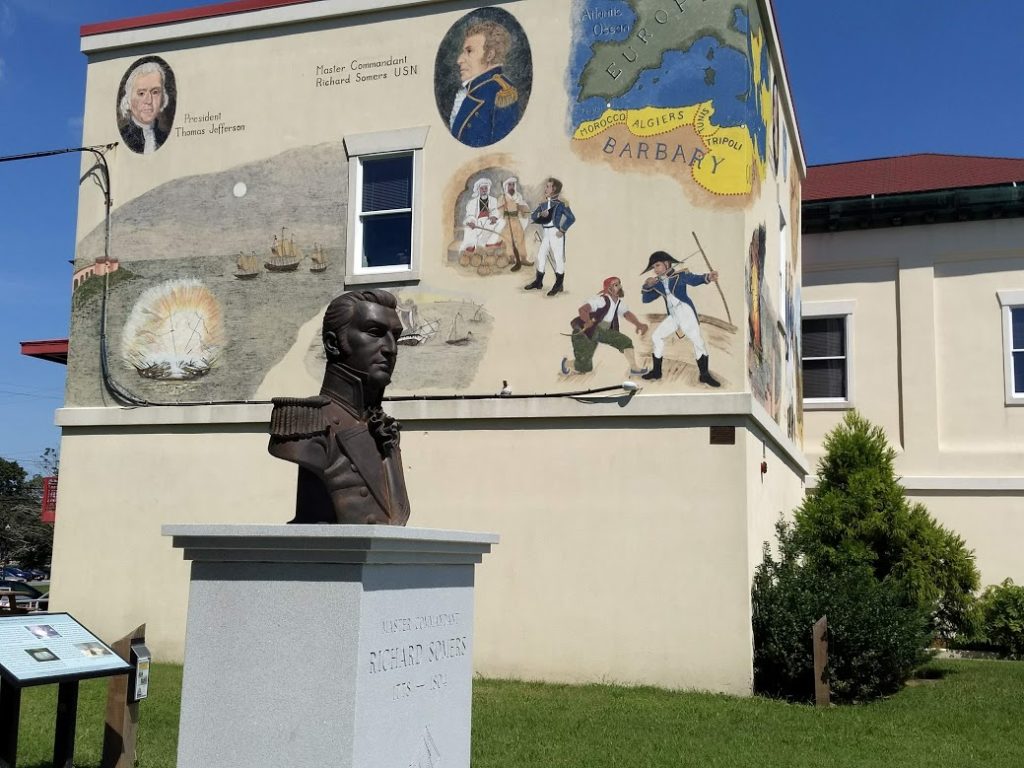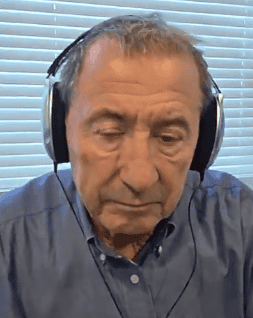VOLUME I: ICE AGE TO BOARDWALK (Rough Draft Of The First 15 Chapters)
INTRODUCTION
Several years ago, I taught U.S. History I at a nearby college. Our textbook was highly rated and is used by many colleges and high schools.
My students found it boring and confusing. The textbook described details of many minor events and personalities that had little impact on our country. It failed to mention much more significant events and historical figures that had a much bigger impact.
This was because most educators demand books that feature groups and causes that are popular today, even when they had little influence in the past. They also want books that support today’s popular political agendas.
Most textbooks used to teach history today have another big problem. They are national publications that do not include local history. Most students enjoy learning about where they live and people whose names they recognize.
Most schools and colleges lost interest in local history when national standardized tests were used to measure teacher and student performance.
This book tells 48 true stories that fill many of those gaps. They begin with the Ice Age and end with the building of the Atlantic City Boardwalk. Those were the years covered by the U.S. History I course I taught. I hope to later write a second book for the years covered by the U.S. History 2 course that I also taught.
SETH GROSSMAN, Atlantic City, New Jersey. July 11, 2025 (230 words)
- ICE AGE AND LANDBRIDGE: ASIANS MIGRATE TO AMERICA.
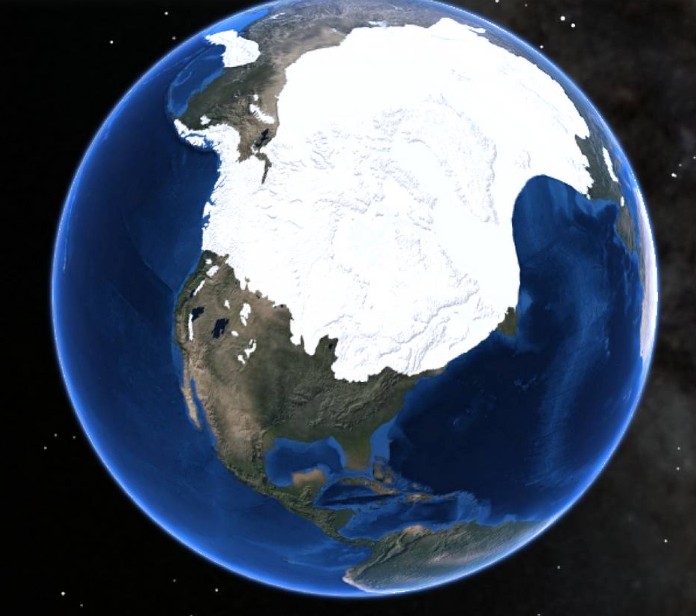
About 20,000 years ago, the earth became much colder than it is today. In northern Europe, Asia and North America, snow that fell during the winter did not melt in the summer. For thousands of years, that snow piled up and compressed into thick sheets of moving ice called glaciers. What are now Canada and the northern parts of the United States, including northern New Jersey, were covered with ice. The ice over what is now Chicago was roughly 3,000 feet thick.
Those giant glaciers contained so much frozen water that sea levels were 400 feet below what they are today. What is now Atlantic City was 30 to 50 miles away from the ocean. Dry land connected eastern Asia and western North America.
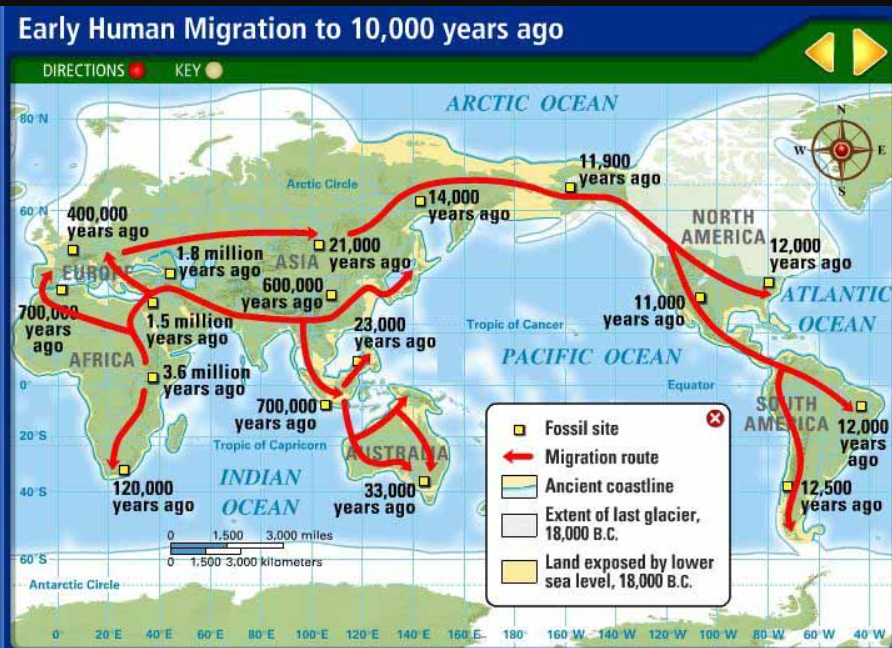
***NEED APPROVAL TO USE IMAGE.
During that time, groups of Asians living in what is now Mongolia or Siberia migrated to North America and settled here. Their descendants are now called American Indians or Native Americans.
155 Words
- THE EARTH WARMS, THE ICE MELTS. AND THE LENNI-LENAPE SETTLE BY THE DELAWARE RIVER AND BAY
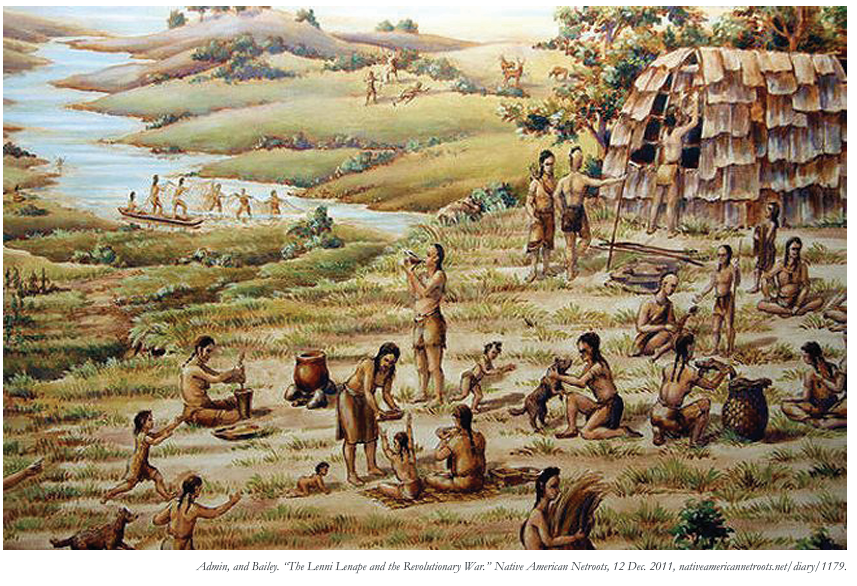
***NEED APPROVAL TO USE IMAGE.
About 13,000 years ago, the earth slowly became warm again. The giant glaciers melted. Much of their water flowed into the oceans. That raised sea levels to what they are today. Water from these glaciers also created thousands of lakes throughout Canada and the northern United States. They include the five Great Lakes in the Midwest, and Lake Hopatacong in New Jersey.
American Indians who spoke an “Algonkian” language then moved into the northern parts of North America east of the Rocky Mountains. They included the Powhatan in Virginia, the Mohegan (Mohicans) in Connecticut, the Shawnee in Ohio, and the Algonquian of Quebec and Ontario in Canada.
Another group of Algonkian speaking Indians settled in and around the Delaware River and Bay. They called themselves the Lenni-Lenape which means “real people”. According to their legends, all Algonkian speaking nations were once part of their tribe.
It was also said that other Algonkian tribes often asked the Lenni-Lenape to mediate disputes and to prevent or end wars between them.
Many Lenni-Lenape were later called the Delaware. That is because the English named the river and bay near them after Lord De La Warr. He was the Governor and Captain General who helped save their Jamestown settlement in Virginia in 1610.
Another group of Native Americans speaking an Iroquoian language also moved to this part of North America. They included the Iroquois and the Huron nations. Most lived near the Great Lakes in what is now upstate New York and Pennsylvania (US) and southern Ontario and Quebec (Canada). However, one Iroquoian tribe, the Susquehannock, lived in parts of what are now Maryland and Pennsylvania near the Delaware River. Some also hunted and fished in what is now South Jersey. 287 words
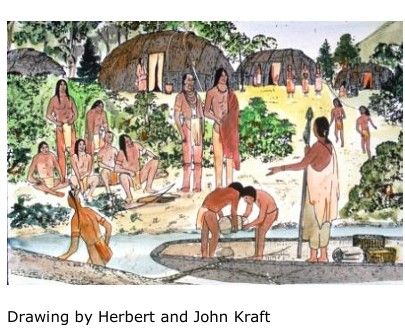
- MANY LENNI-LENAPE SPEND SUMMERS BY RIVERS, BEACHES AND THE “LITTLE WATER” IN SOUTH JERSEY.
*** NEED PERMISSION TO USE IMAGE. HERBERT KRAFT DIED IN 2000. WAS A PROFESSOR OF ANTHROPOLGY DEPARTMENT OF SETON HALL.
Many Lenni-Lenape who lived near the Delaware River left their villages after planting their spring crops. They set up summer homes near the creeks, back bays, and beaches near the Atlantic Ocean and Delaware Bay. There they hunted, fished, and gathered clams and oysters. They called one back bay “Absegami”, which means “Little Water”. Today it is called Absecon Bay. The town of Absecon was later built along its shore. A barrier island by the ocean on the other side of that bay was later called Absecon Island. Atlantic City was later built there.
At the end of each summer, most of the Lenni-Lenapi returned to their villages west of the Delaware River. There they harvested their crops and spent their winters.
Some Lenni-Lenapi and Susquehannock Indians may have stayed in parts of South Jersey during the winter. However, it appears that they moved from place to place and did not have permanent settlements here.
155 words
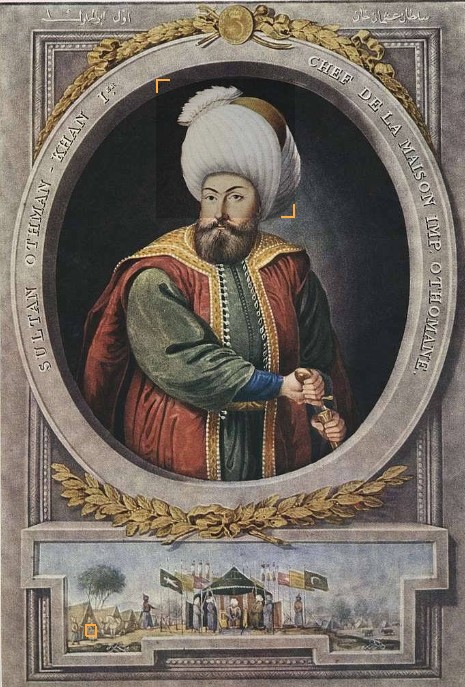
- THOUSANDS OF MILES AWAY, ITALIAN MERCHANTS TRADE WITH CHINA AND A TURKISH WARRIOR SEIZES A SMALL PROVINCE IN THE MIDDLE EAST.
In the year 1281, a Turkish warrior chief named Osman captured a small kingdom in the Middle East more than 5,000 miles away from the lands of the Lenni-Lenape. That began a chain of events that brought Europeans to those lands roughly three hundred years later.
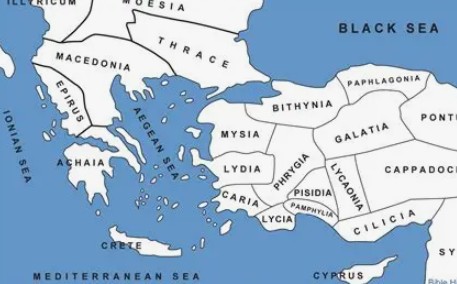
NEED BETTER MAP SHOWING CONSTANTINOPLE AND BITHYNIA. NEED SOURCE AND PERMISSION
The kingdom taken by Osman was called Bursa. It was part of Bithynia, a province of the Greek speaking Eastern Roman or Byzantine Empire. Most of its people had been Christians since Saint Peter the Apostle preached the Gospel there more than 1200 years before.
Bithynia was near Constantinople. At that time, Constantinople was the largest city in Europe. It had been the capital of the Eastern Roman Empire for a thousand years. Constantinople was also one of busiest and richest commercial centers in the world. Ships from the Mediterranean Sea passed by Constantinople on their way to ports along the Black Sea. They carried goods from all over Europe like wheat, honey, olive oil, leather, wine, knives and swords. Caravans then took them to China. They returned with silk, tea, and ceramics from China and spices from the Spice Islands (now Indonesia) to be put on ships and sold throughout Europe.
Italian merchants from Venice, Genoa, Florence and Milan owned and sailed most of those ships. One of them, Marco Polo, wrote a famous book about his travels throughout the East.
In just over a hundred years, Osman and his successors brought all of that to an end.
245 words
- OTTOMAN’S TURKS BUILD AN EMPIRE AND PUSH ITALY’S SAILORS INTO THE ATLANTIC OCEAN.
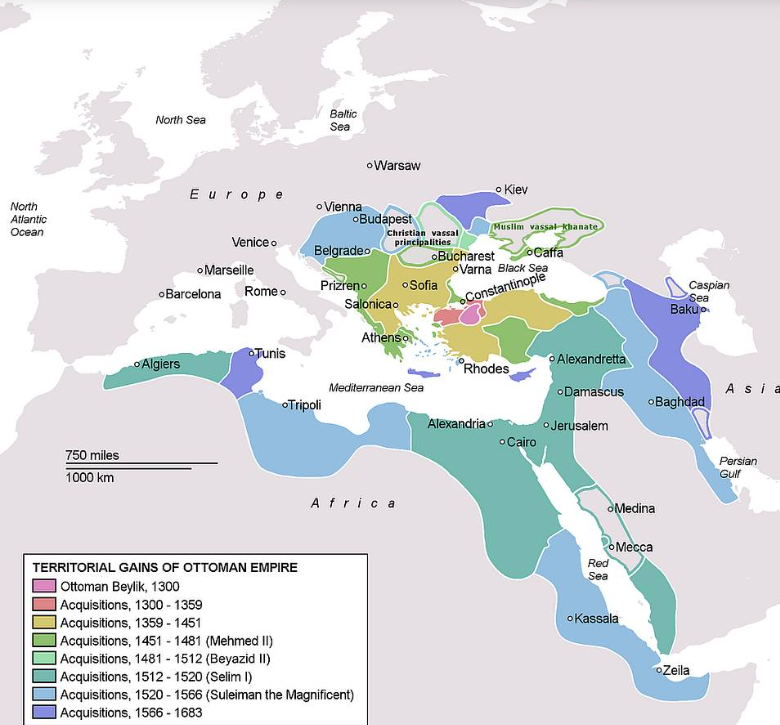
Above Image: By 1300, Osman I conquered the small province of Bithynia in pink, near Constantinople. In just over a hundred years, his successors conquered all of the area shaded in green and light brown. It included Greece, the Balkans, modern day Turkey, the Middle East, Egypt and Algeria.
Osman was known as a ghazi. He was a Muslim raider who attacked and robbed towns and caravans of kafirs (nonbelievers) during jihads (religious wars).
However, Osman and his successors did what ghazis never did before. They held `and occupied the cities and towns they attacked. They quickly turned their small holdings in Bithynia into a powerful Empire. They recruited, organized and equipped large professional armies and navies. They ruled and taxed the people they conquered with ruthless efficiency.
Osman’s name was also pronounced “Ottoman”. The Turkish empire that Osman and his descendants created became known as The Ottoman Empire.
By the late 1300s, the Ottomans had conquered most of present-day Turkey, Greece and Southeastern Europe. They also seized most of the islands and port cities used by Italian merchant ships. In 1453, the Ottomans seized Constantinople and renamed it Istanbul.
Ottoman warships and those of “Barbary” Muslims in North Africa attacked and robbed the ships and coastal towns of kafirs who failed to submit and pay tribute. This made most of the Mediterranean Sea dangerous and unprofitable for Italian merchants and their ships. The Italians looked for new trade routes in the Atlantic Ocean.
195 words.
- SPAIN IS FIRST TO FIND SEA ROUTES TO CHINA AND RICHES IN AMERICA.
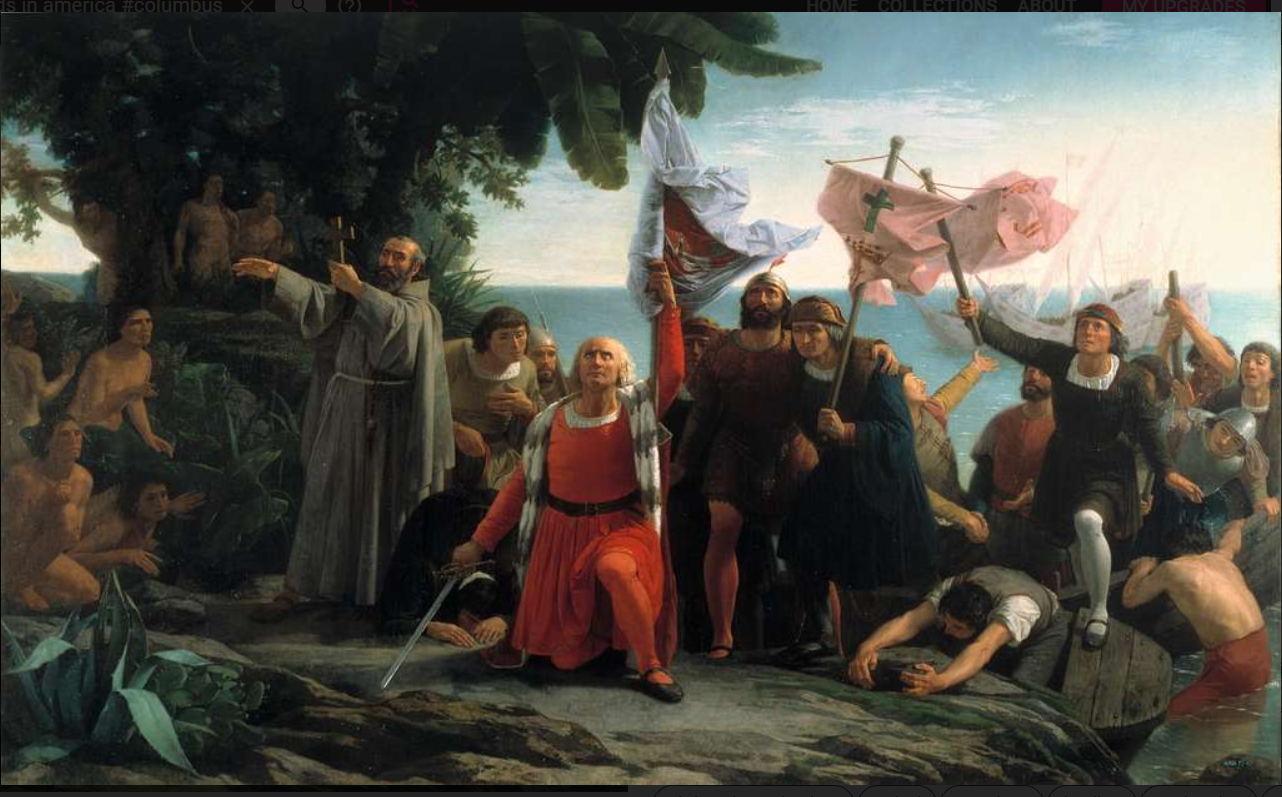
Above Image: On October 12, 1492, Columbus lands on an island in the Bahamas. He claims it for Spain and names it San Salvador (Holy Savior).
In 1317, a sea captain named Emanuele Pessagno left his home in Genoa, Italy. He moved to Portugal and changed his name to Manuel Pessanha. From there he discovered new trade routes in the Atlantic Ocean along the coast of Africa.
In 1495, Giovanni Caboto left Italy and moved to England. There he became known as John Cabot. In 1497, he sailed across the Atlantic Ocean looking for a sea route to China. He landed in Newfoundland and other parts of Canada instead.
Columbus left Genoa to sail the Atlantic for Portugal in 1476. After ten years he left to sail for Spain. In 1492, Columbus crossed the Atlantic also hoping to reach China. He reached America instead. Later Spanish explorers found sea routes to China and the Spice Islands. They also found gold, silver, and other riches in Mexico and South America. Spain quickly became the richest and most powerful nation in Europe.
In 1506, Giovanni da Verrazano left Florence in Italy and moved to France. In 1523, the King of France hired him to look for a passage to the Pacific Ocean between Spanish Florida and English Newfoundland. In 1524, Verrazano sailed to what is now South Carolina. He then sailed up the coast to Newfoundland in Canada. He explored many rivers and bays he passed along the way. One of them was what is now known as Raritan Bay between Sandy Hook, New Jersey and Staten Island, New York.
242 words
- CATHOLIC SPAIN IS WEAKENED BY “RELIGIOUS WARS” BETWEEN CATHOLICS AND PROTESTANTS. IT FAILS TO CONQUER PROTESTANT ENGLAND.
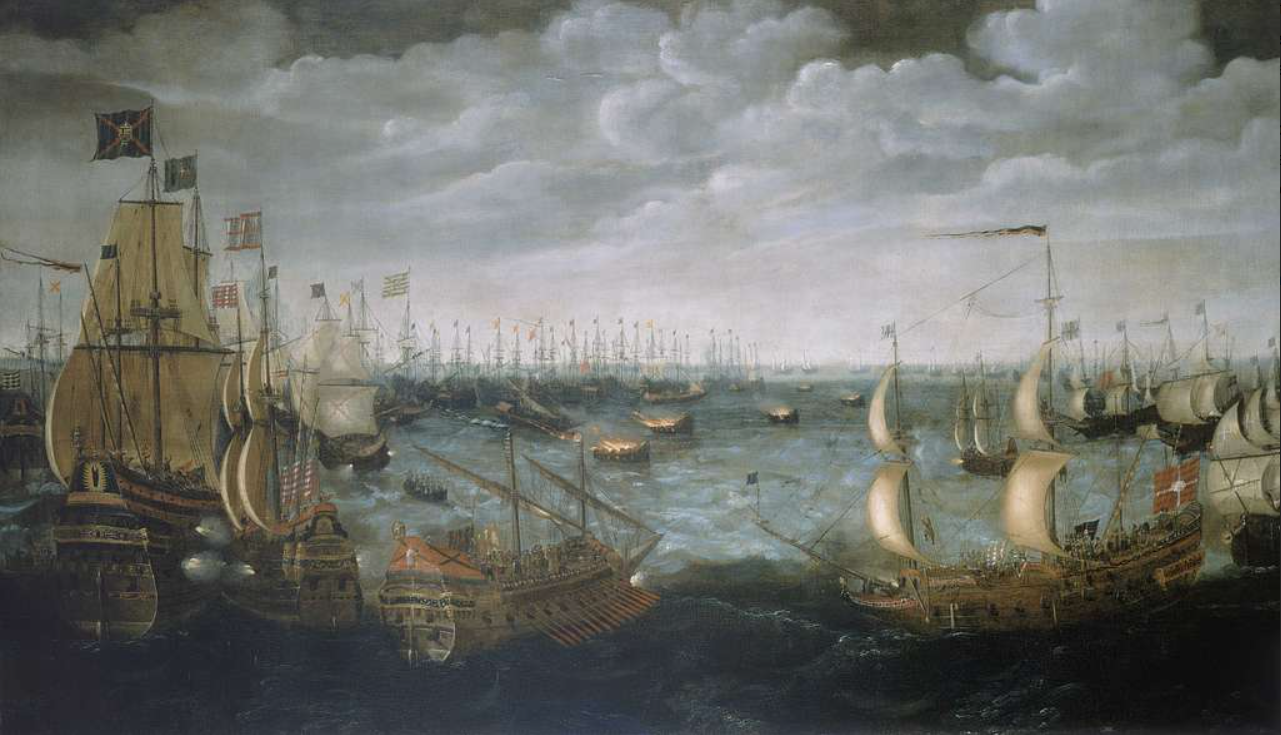
Above Image: In 1588, Spain sent the Armada, a massive fleet with 52,000 soldiers to invade England and make it Catholic again. It was defeated by bad weather and a much smaller English fleet. The English on the right are shown using “fire ships” to destroy Spanish ships on the left.
In 1519, King Charles V of Spain also became ruler of the Holy Roman Empire. He controlled much of what is now Austria, Holland, Germany and Italy as well as Spain and its colonies. This forced Spain to fight in deadly and destructive “Wars of Religion” against Protestants for many years.
Until then, almost all Christians in Europe were Catholics. The Pope in Rome ran their churches, appointed their priests, and determined church doctrines and practices. The Pope also supported, opposed and influenced political leaders.
In 1410, Jan Hus, a Czech priest in Bohemia, publicly opposed several Catholic doctrines and practices. In 1415, Hus was arrested, condemned and burned alive for heresy.
In 1517, Martin Luther, a German priest, published “95 Theses” criticizing the Pope and the Catholic Church. Luther claimed that any Christian could understand God’s laws by reading the Bible. He said, “Every Christian a priest”. Luther urged congregations to choose their own priests and run their own churches.
In 1521, Pope Leo X condemned Martin Luther as a heretic. In 1529, Charles V as King of Spain and Holy Roman Emperor declared total war on Luther and his followers. However, Luther and his supporters “protested” those actions and fought back. They became known as Protestants.
In 1534, King Henry VIII of England also opposed the Pope. He established a separate Church of England. England then supported and defended Protestants in Holland and throughout Europe.
In 1588, Spain sent an “Armada” to invade England and make it Catholic again. It was a massive force of 137 ships, 10,000 sailors, 52,000 soldiers, and 2,500 cannons. That Spanish Armada was defeated and destroyed by bad weather and a much smaller English navy.
297 words
- ENGLAND LOOKS FOR NORTHERN SEA ROUTES TO CHINA AND COLONIES IN NORTH AMERICA. ITS FIRST EXPLORERS AND SETTLERS DIE OF COLD AND HUNGER.
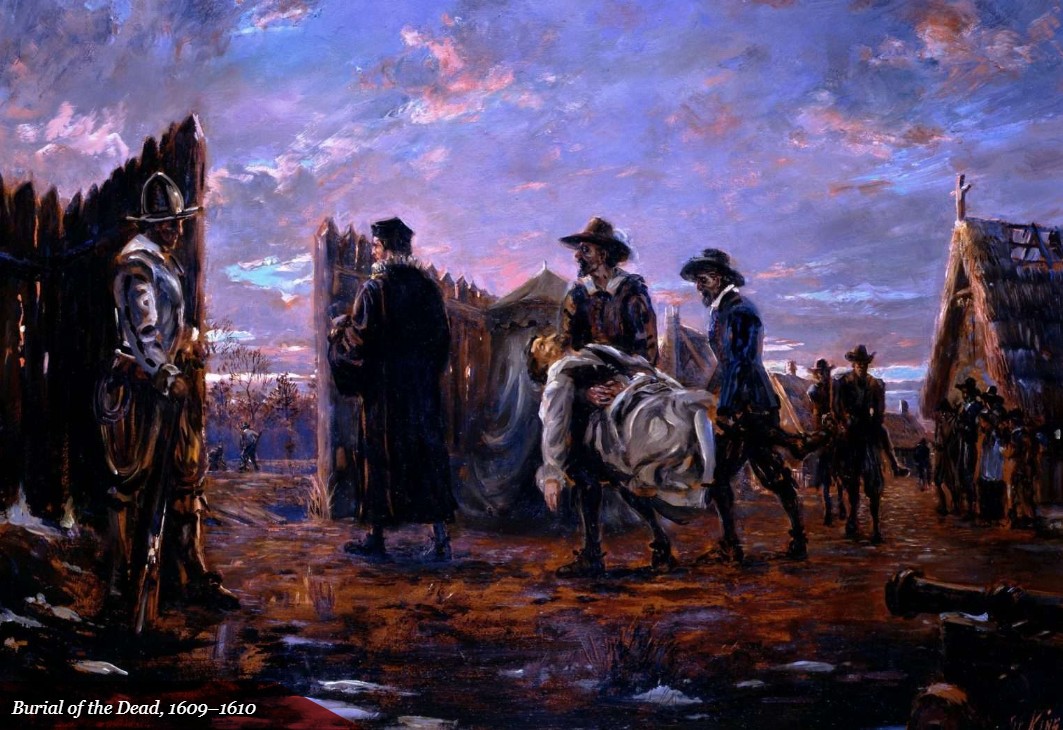
England had been looking for trade routes to China long before its wars with Spain. King Henry VII had sent John Cabot across the Atlantic in 1497. In 1566, Queen Elizabeth chartered a company to find a northern sea route to China. It sent ships to explore the ice filled seas north of Russia. In 1607, it sent Henry Hudson on a ship that tried to reach China by sailing over the North Pole. Hudson believed long summer days melted the ice there. However, he was wrong and blocked by sea ice.
In 1609, a different company sent Hudson west across the Atlantic Ocean. Like Verrazano, Hudson reached the Outer Banks of North Carolina. He also sailed north along the coast of America hoping to find an opening to China. In 1610, Hudson reached Hudson Bay in Canada looking for that “northwest passage”. Hudson’s crew mutinied when Hudson refused to turn back as winter approached. They put him on a small boat and left him to die of cold and hunger.
In 1606, King James of England gave the Virginia Company of London a charter to establish colonies in North America. In 1607, that company “planted” 104 men and boys in a settlement or “plantation” in Jamestown, Virginia. It brought more settlers during the next two years. They spent much of their time searching for gold and failed to grow enough food.
Most died from hunger during winter of 1609-1610. That winter became known as “The Starving Time”.
245 Words
- LAND AND LIBERTY BRING WEALTH AND SUCCESS TO ENGLISH SETTLERS IN VIRGINIA.
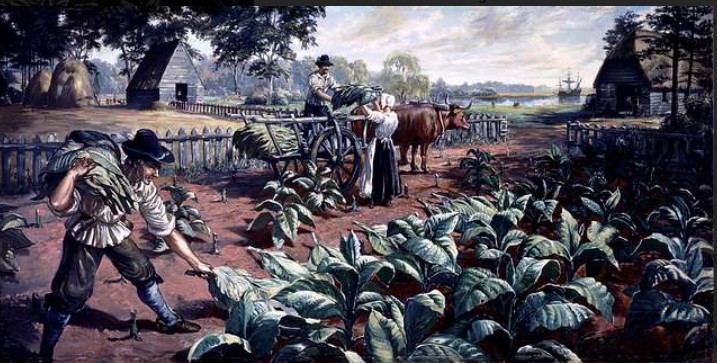
Above Image: Beginning in 1613, the company that ran the Jamestown colony gave each family its own land to farm. This greatly increased the production of food and cash crops like tobacco. and to farm
The Starving Time disaster forced the Virginia Company of London to completely change how it ran Jamestown. Until then, the Company owned almost all the land there. The settlers who worked it were either employees or indentured servants of the Company.
Employees were paid wages. Indentured servants sold their freedom for seven years to pay debts including their passage to America. Until that term expired, indentured servants were given only food, clothing and shelter. All harvests were put in the company storehouse. Surpluses were kept by the Company as profit. Most decisions on running the colony were made by Company officials 4,000 miles away in London.
In 1613, the Company gave a 3-acre plot of land to each family and enough time off to work it. The Company increased it to 50 acres in 1616 and to 100 acres per family in 1618.
In 1619, the Company changed its charter to let these new landowners run its colony. It allowed them to elect a 22-member House of Burgesses. “Burgess” was an old English word for freeholder or landowner. These elected representatives now made all laws and approved all taxes for the colony.
Farm production increased immediately. Men, women and even small children in each family worked long hours during the growing season to clear their own land, and to plant, weed, fertilize and harvest their own crops. The Jamestown settlers soon produced far more food than they needed. They also grew tobacco and other cash crops. Their colony became prosperous and self-sufficient.
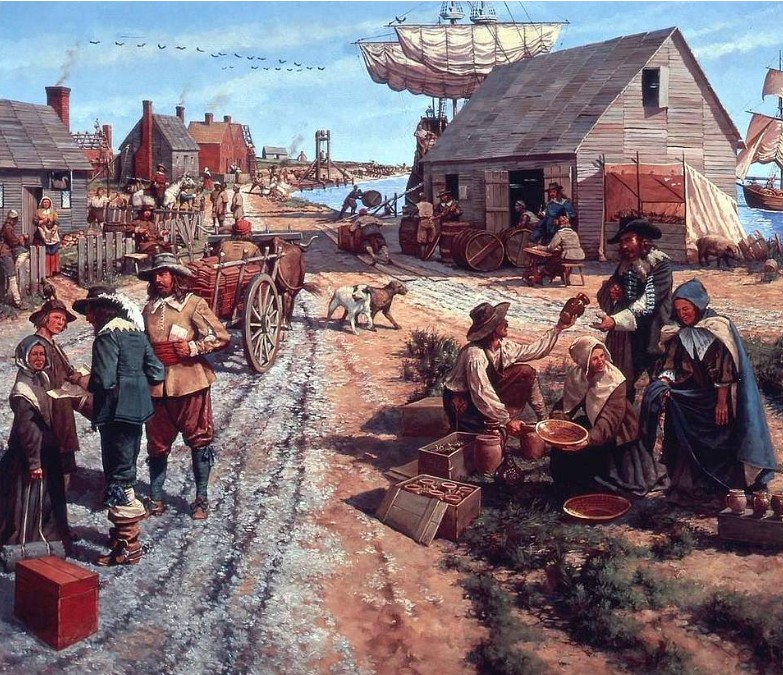
Above Image: Jamestown, Virginia prospers after 1620 when settlers own their land and are free to choose who runs their colony.
This was also good for the Company. The land it still owned in Jamestown was now far more valuable. Liberty had brought prosperity to everyone. 277 words
10. 1619: DUTCH PRIVATEERS CAPTURE A PORTUGUESE SLAVE SHIP AND SELL 20 AFRICANS IN JAMESTOWN.
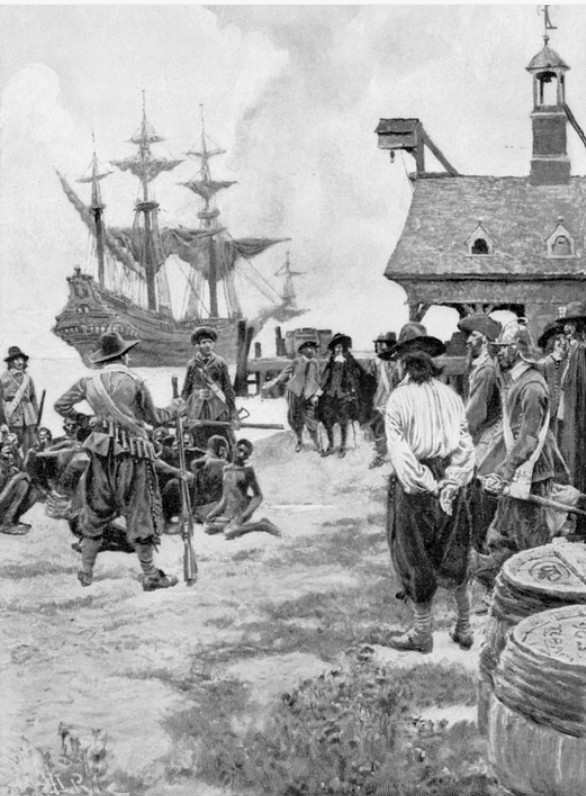
Between 1598 and 1663, Protestant Holland fought wars against Catholic Spain and Portugal. At home, Holland fought to free itself from Spanish rule. Overseas, Holland fought The Spice Wars. It sent warships to take over Portugal’s rich trading posts and spice-producing colonies in Asia and Africa.
Holland often used privately owned warships called “privateers”. It gave captains of those ships “Letters of Marque”. These were licenses to attack and rob Portuguese ships and coastal towns. In return, privateers agreed to give the Dutch government a share of what they captured.
Without those letters, those privateers would be pirates under international law. If captured, they could be executed as criminals. As privateers, they were supposed to be treated as captured soldiers and held as prisoners of war.
In 1619, English privateers working for Holland attacked and captured a Portuguese ship sailing to the Spanish colony of Mexico. Its cargo was 200 Africans who had been bought as slaves in Angola.
The privateers captured them. However, they needed more food to feed them.The privateers then sailed to Jamestown. There they traded 20 of the Africans for “victuals” (food).
At the time, Jamestown had no laws permitting people to be bought, sold, or owned as slaves. The Africans were purchased through indentured servant contracts. They were set free at the end of their fixed term of service. Some of them later purchased other Africans as slaves.
233 words.
11. UNTIL 1619, SLAVERY WAS NORMAL IN MOST OF THE WORLD. HOWEVER, IT WAS UNKNOWN IN JAMESTOWN AND MOST OF CHRISTIAN EUROPE.
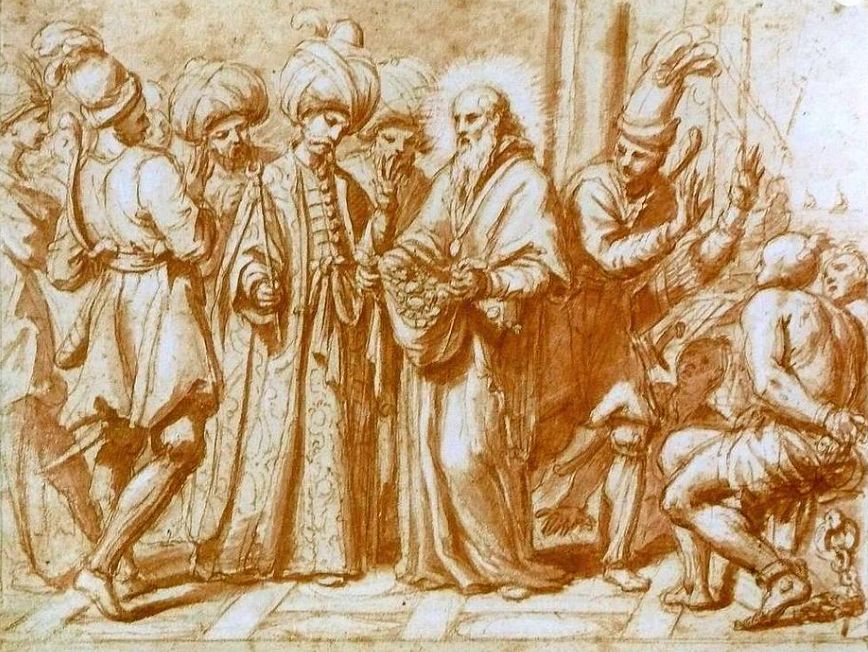
Above Image: A priest tries to buy freedom for Christians who were captured and held as slaves by Ottoman Turks during the 1600s. By Italian painter Giovanni Maria Morandi (1622-1717)
In 1619, slaves and slavery were normal in most of the world. People were routinely captured, sold and owned as slaves in India, China, and all Islamic countries. Native Americans in North and Central Americans captured, owned and sold people from weaker tribes long before Europeans arrived.
However, slavery was unknown in Jamestown. Christians had ended slavery in England and most of Europe some 600 years before.
The first Christians believed that they were all part of one church and one family. Many of them were slaves. Christians also followed the Ten Commandments and many other laws in the Jewish Old Testament of the Bible. Some of them, like the law Jubilee in the Book of Leviticus, required slaves to be free after a number of years.
In the year 313 A.D., Emperor Constantine made Christianity an official religion of the Roman Empire. In 873, Pope John VII declared the enslavement of Christians to be a sin. Most Christian countries in Europe ended slavery by the 1100s.
However, in 610 A.D. a prophet named Muhammad began the new religion of Islam in Arabia. It permitted, promoted, and expanded slavery. It urged all Muslims, those who submitted to sharia (Islamic law) to wage jihad (religious war) against all kafirs (non-believers). It gave Muslims the right to enslave any kafirs they captured.
Between 629 and 732, Muslims seized Spain, North Africa and most of the Middle East from what was left of the Roman Empire. They also conquered Persia (Iran) and much of what is now India and Pakistan. During these years, there was an abundance of slaves in the Islamic world.
However, in 732, Charles Martel, the grandfather of Charlemagne, defeated a Muslim army in France. Later Christians pushed Muslims out of much of Spain and Portugal. Muslims could no longer capture large numbers of slaves in Europe.
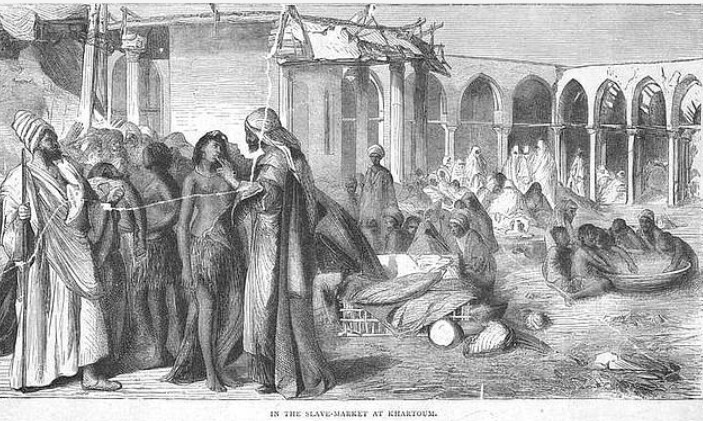
Above Image: Arab slave market in Khartoum, Sudan, Africa.
Arabs then crossed the Sahara Desert to capture slaves in Africa. They captured so many that even today, the Arabic word “abd”, which means slave, also means black African.
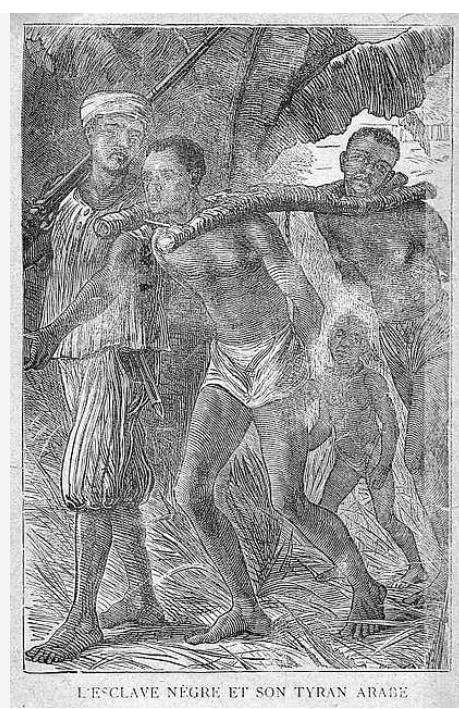
Above Image: “Negro Slave and his Arab Overseer” drawn by a French missionary in Africa during the 1800s.
329 words
12. PORTUGUESE USE AFRICAN SLAVES TO GROW SUGAR IN BRAZIL.
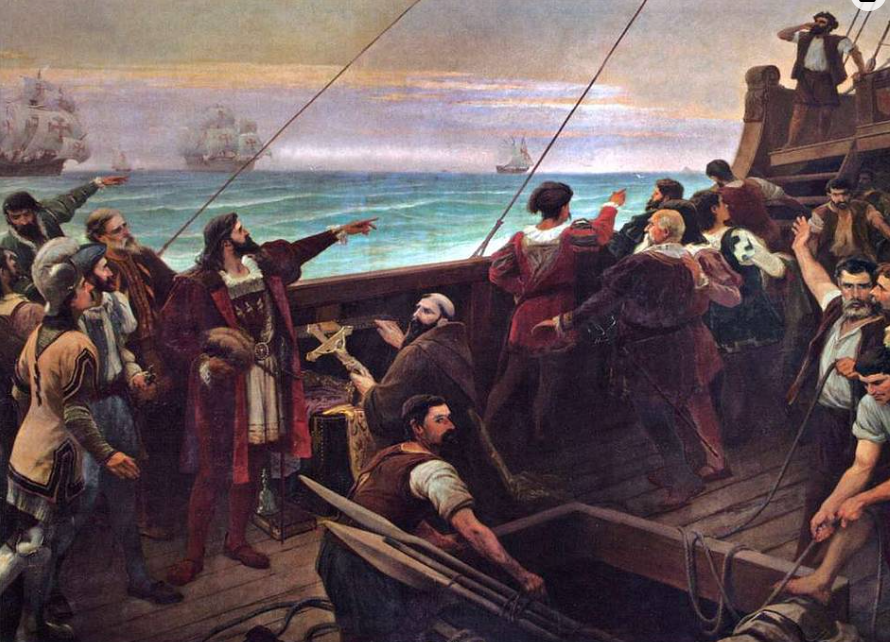
Above Image: Portuguese Sea Captain Pedro Cabral discovers what he thinks is an unknown island after sailing too far west in the Atlantic Ocean. He was trying to lead 13 ships with 1,200 men around the coast of Africa to reach India. He later learned that what he saw was part of the South American continent. It was later named “Brazil”.
During the 1400s, Portugal, like England, France, and Spain, was looking for sea routes to China and The Spice Islands (Indonesia). However, Portugal sent its ships south along the coast of Africa. In 1488, Bartolomeu Dias sailed around the southern tip of Africa. In 1498 Vasco da Gama, reached India. In 1511, Afonso de Albuquerque reached and conquered Malacca, one of the Spice Islands. In 1500, a Portuguese sea captain named Pedro Cabral found Brazil in South America while leading an expedition
During this time, Portuguese ships often stopped at coastal towns and villages in Africa for food and fresh water. In the African region of Angola, the Portuguese met and traded with an aggressive warrior tribe known as the Imbagala. They also met and traded with a powerful Bantu nation known as the Mbundu. Both the Imbagala and the Mbundu routinely attacked and enslaved people from weaker tribes around them. Beginning in the 1500s they traded large numbers of slaves they captured to the Portuguese for guns and other European goods.
The Portuguese, unlike English and most European Christians, had a tradition of slavery. In the year 711 A.D., most of Portugal was conquered Muslims from North Africa who were called Moors or Saracens. For the next 700 years, Portuguese Christians fought brutal “Reconquista” wars to regain their territory. During those wars, the Moors and the Portuguese often captured and enslaved each other.
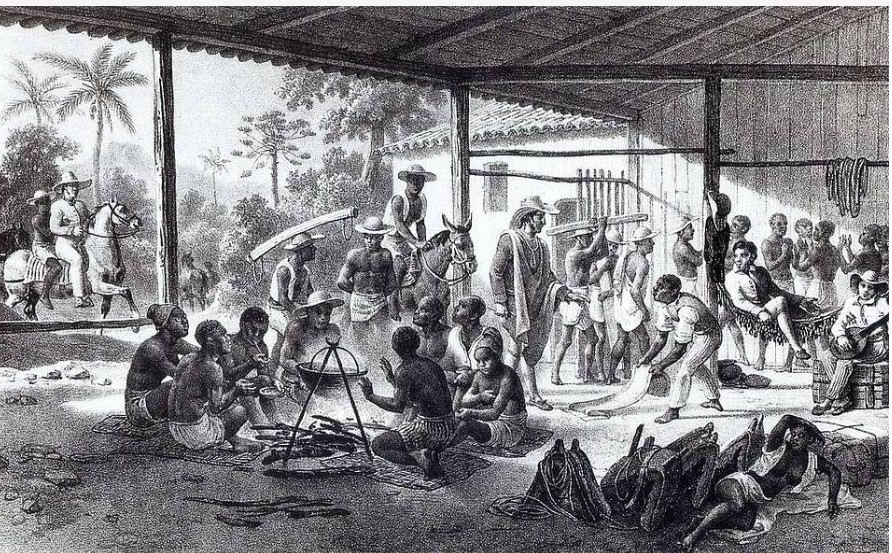
Above Image: “Recently bought slaves in Brazil on their way to the farms of the landowners who bought them”. Brazil was a colony of Portugal until 1822. By German artist Johann Morits Rugendas, 1830.
The Portuguese took most of the slaves they bought in Angola to their South American colony of Brazil. They used those slaves to clear jungles and plant, harvest and process sugar cane. The Portuguese made enormous profits from molasses and rum made from that sugar.
Fortune seekers from Spain, France, England and Holland then rushed to do the same. They also bought large numbers of slaves in Africa. They then used them to clear land and set up enormously profitable sugar plantations in Central and South America and in Caribbean Islands.
335 words
13. THE 1619 PROJECT IS WRONG: AMERICA LOST WEALTH FROM SLAVERY.
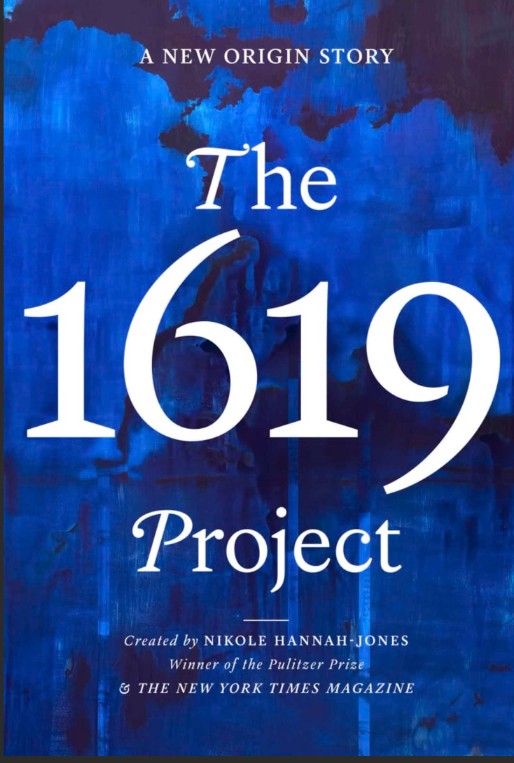
The first 20 Africans sold in Jamestown, Virginia in 1620 were treated much like white indentured servants. They were free when their years of service expired. However, Africans were sold as permanent slaves after 1640.
In 1661, the House of Burgesses made laws allowing Black slaves to be bought, sold and owned as property. They also made newborn children of slave mothers the property of the owner.
These laws were copied from slave laws made that same year in Barbados. Barbados was a British colony in the Caribbean which had permitted Africans to be owned as slaves for many years. Barbados based its laws on how the Dutch and Portuguese treated their slaves.
In 2019, the New York Times Magazine published a series of articles and teaching materials called The 1619 Project. They claim that the “exceptional” wealth and prosperity of America was created by the unpaid labor of Black sla`ves. They suggest that white Americans today have a moral obligation to compensate the descendants of those slaves through “reparations”.
The 1619 Project completely ignores these key facts:
- Nations that had the most slaves became the poorest countries in the world. They include India, China, and the Muslim “Barbary” slave centers of Morocco, Algiers, Tunis and Tripoli in North Africa. Until recently, Portugal was one of the poorest nations in Europe.
- Before slavery was abolished in America in 1866, there was far more poverty and far less wealth among both Blacks and whites in the southern slave states than in northern free states.
- Whatever wealth was created by slavery in America before 1866 was destroyed during the four-year Civil War that ended it.
276 words
14. FREDERICK DOUGLASS: “WEALTH, COMFORT, TASTE AND REFINEMENT IN FREE MASSACHUSETTS NOT SEEN IN SLAVEHOLDING MARYLAND.”
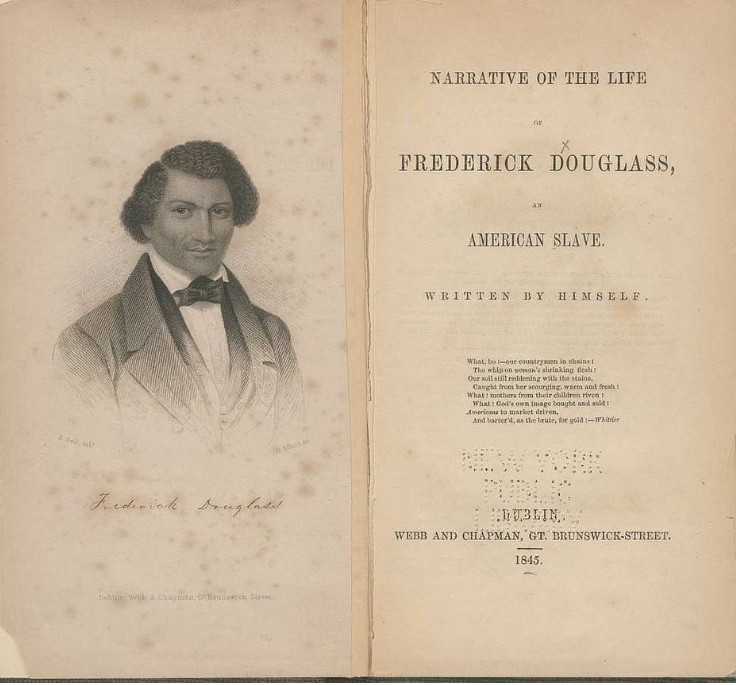
This first-hand account by Frederick Douglass is typical of most comparisons made between slave states and free states before the Civil War.
Douglass was born as a slave in Maryland. When he was 20 years old, he escaped and fled to Massachusetts. In 1845, he wrote and published his autobiography. It was called Narrative of the Life of Frederick Douglass. The Project Gutenberg eBook of Narrative of the Life of Frederick Douglass, by Frederick Douglass
“I had very strangely supposed, while in slavery, that few of the comforts, and scarcely any of the luxuries, of life were enjoyed at the north, compared with what were enjoyed by the slaveholders of the south. I probably came to this conclusion from the fact that northern people owned no slaves. I supposed that they were about upon a level with the non-slaveholding population of the south. I knew they were exceedingly poor, and I had been accustomed to regard their poverty as the necessary consequence of their being non-slaveholders. . .
“Upon coming to the north, I expected to meet with a rough, hard-handed, and uncultivated population, living in the most Spartan-like simplicity, knowing nothing of the ease, luxury, pomp, and grandeur of southern slaveholders.
“Such being my conjectures, anyone acquainted with the appearance of New Bedford (Massachusetts) may very readily infer how palpably I must have seen my mistake.
“In the afternoon of the day when I reached New Bedford, I visited the wharves, to take a view of the shipping. Here I found myself surrounded with the strongest proofs of wealth. Lying at the wharves, and riding in the stream, I saw many ships of the finest model, in the best order, and of the largest size. Upon the right and left, I was walled in by granite warehouses of the widest dimensions, stowed to their utmost capacity with the necessaries and comforts of life. Added to this, almost everybody seemed to be at work, but noiselessly so, compared with what I had been accustomed to in Baltimore.
There were no loud songs heard from those engaged in loading and unloading ships. I heard no deep oaths or horrid curses on the laborer. I saw no whipping of men; but all seemed to go smoothly on. Every man appeared to understand his work, and went at it with a sober, yet cheerful earnestness, which betokened the deep interest which he felt in what he was doing, as well as a sense of his own dignity as a man. To me this looked exceedingly strange. From the wharves I strolled around and over the town, gazing with wonder and admiration at the splendid churches, beautiful dwellings, and finely-cultivated gardens; evincing an amount of wealth, comfort, taste, and refinement, such as I had never seen in any part of slaveholding Maryland.
“Everything looked clean, new, and beautiful. I saw few or no dilapidated houses, with poverty-stricken inmates; no half-naked children and barefooted women, such as I had been accustomed to see in Hillsborough, Easton, St. Michael’s, and Baltimore (in the slave state of Maryland). The people (in free Massachusetts) looked more able, stronger, healthier, and happier, than those of Maryland. I was for once made glad by a view of extreme wealth, without being saddened by seeing extreme poverty. “
Many travelers to America during this time made similar observations. They included Scottish mapmaker John Melish in 1812. They also included Alexis de Tocqueville in 1831. 573 pages
- ABRAHAM LINCOLN: 250 YEARS OF SLAVERY BROUGHT WAR, DEATH AND DESTRUCTION TO AMERICA. “THE JUDGMENTS OF THE LORD ARE TRUE AND RIGHTEOUS”.
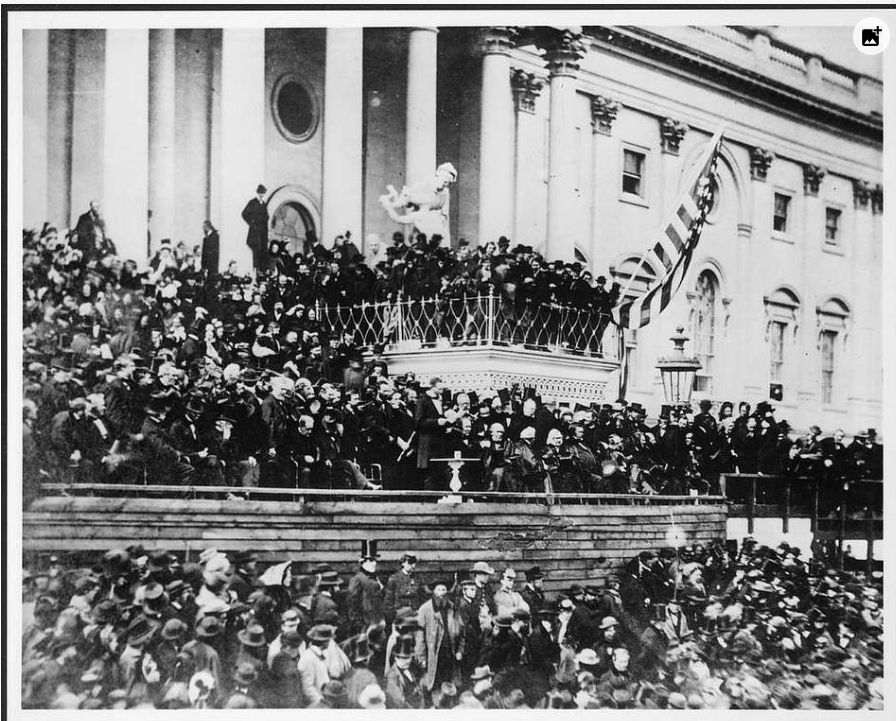
In his Second Inaugural Address of 1865, President Abraham Lincoln described the massive destruction caused by the Civil War as God’s just punishment of America for the sin of slavery.
Yet, if God wills that it (this war) continue until all the wealth piled by the bondman’s two hundred and fifty years of unrequited toil shall be sunk, and until every drop of blood drawn with the lash shall be paid by another drawn with the sword, as was said three thousand years ago, so still it must be said, “The judgments of the Lord are true and righteous altogether.”
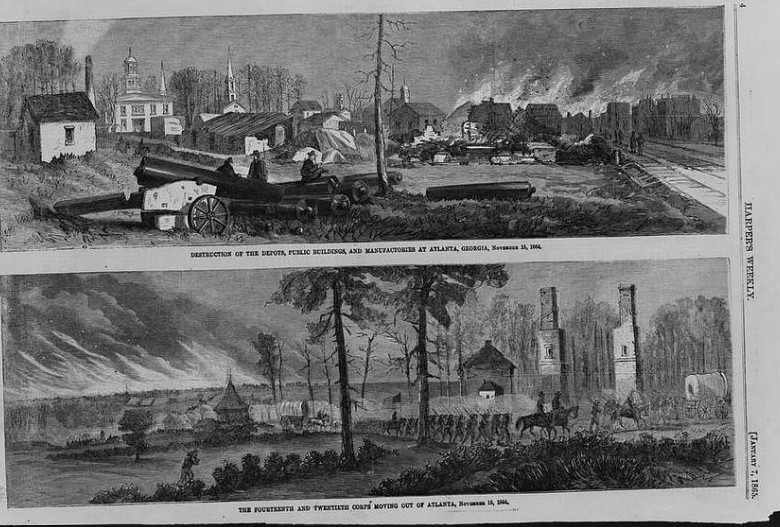
Above Image: The burning of Atlantic Georgia. Almost all factories, workshops, railroads and machinery were completely destroyed during the Civil War. Other major cities in the South were also destroyed. They included Savannah, Georgia and Charleston and Columbia, South Carolina.
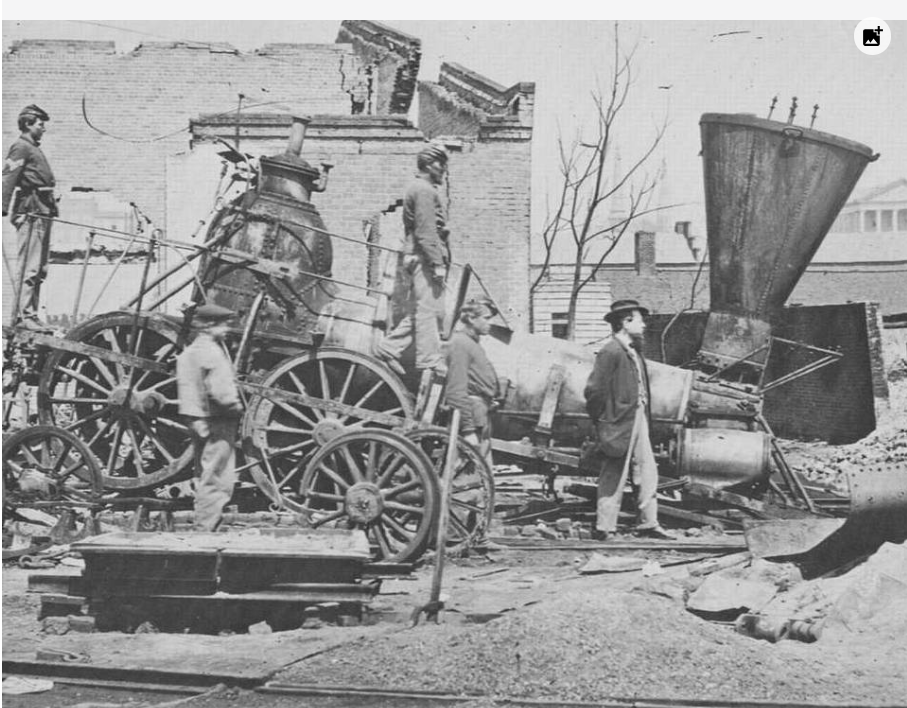
Above Image: Most of the factories, equipment and railroads in Richmond, Virginia were also destroyed by months of heavy fighting in and around the city between 1864 and 1865. This photo was taken by famous Civil War photographer Matthew Brady.
Four years of Civil War killed more than 600,000 American men, roughly 2% of the nation’s 1860 population. It also cost Americans roughly $7 billion of 1860 dollars in economic losses. That comes to roughly $266 billion in today’s dollars. It represented roughly two full years of the nation’s GDP or Gross Domestic Product in 1860.
Most scholars today accept the research published by Claudia Goldin and Frank Lewis of Harvard University in 1975. Their paper, The Economic Cost of the American Civil War: Estimates and Implications itemized those costs as follows:
Government War Spending by North and South: $3.3 billion
Lost Earning Caused by War Deaths, Injuries and Military Service: $2.2 billion
Value of Destroyed Property: $1.5 billion
219 words
THE DRAFT HISTORY BOOK NOW HAS 48 CHAPTERS. THE REST OF THE BOOK WILL BE POSTED ONLINE FOR REVIEW AND COMMENT BEFORE FINAL EDITING, FORMATTING AND PUBLICATION. THE OTHER CHAPTERS WILL BE POSTED HERE SHORTLY.
If you would like to submit any suggestions, corrections, photos, images or other materials before publication, please contact Seth Grossman at 609-927-7333 or email info@libertyandprosperity.com. Thank you! SETH GROSSMAN. July 11, 2025.

